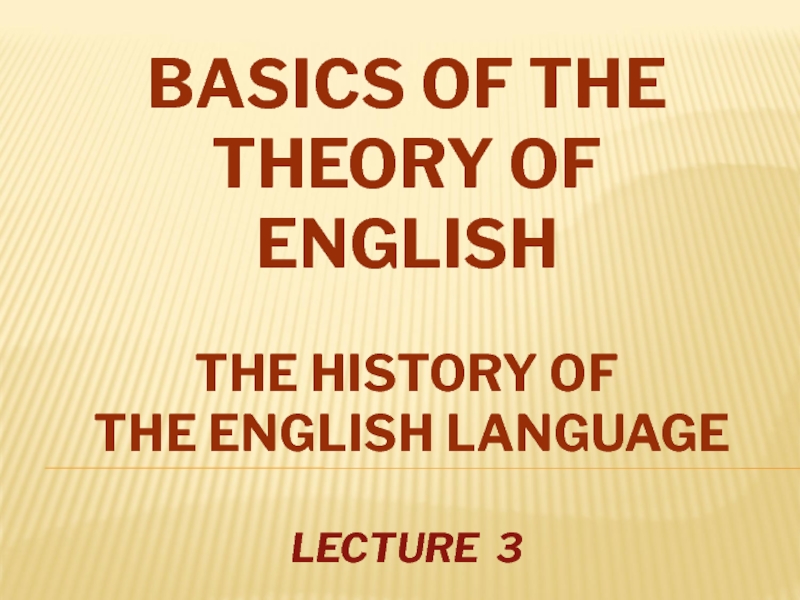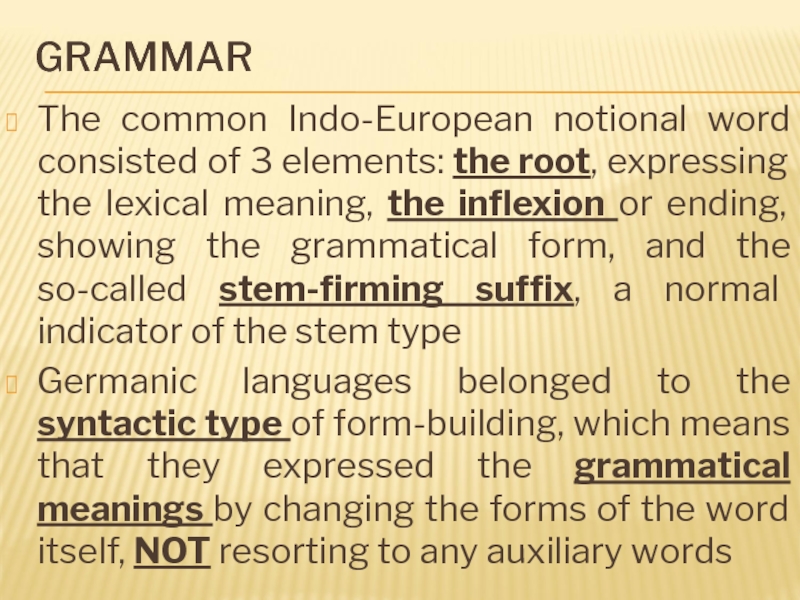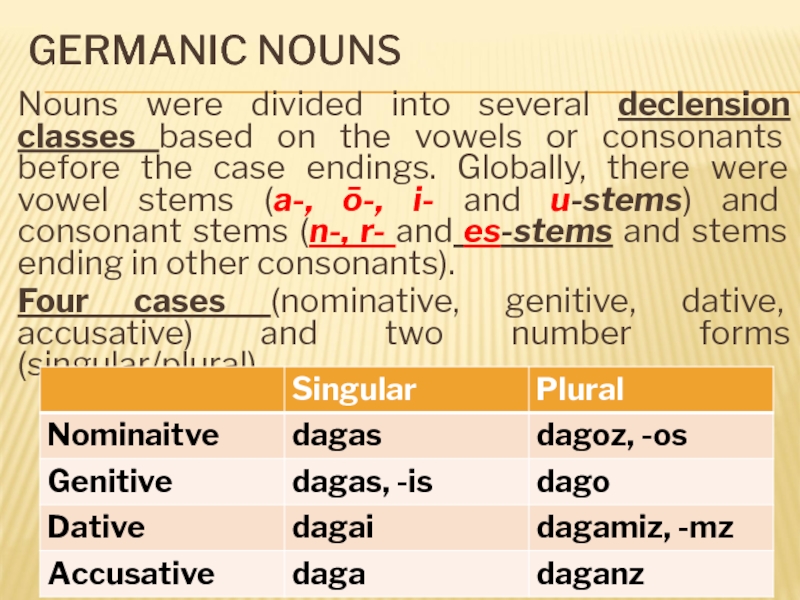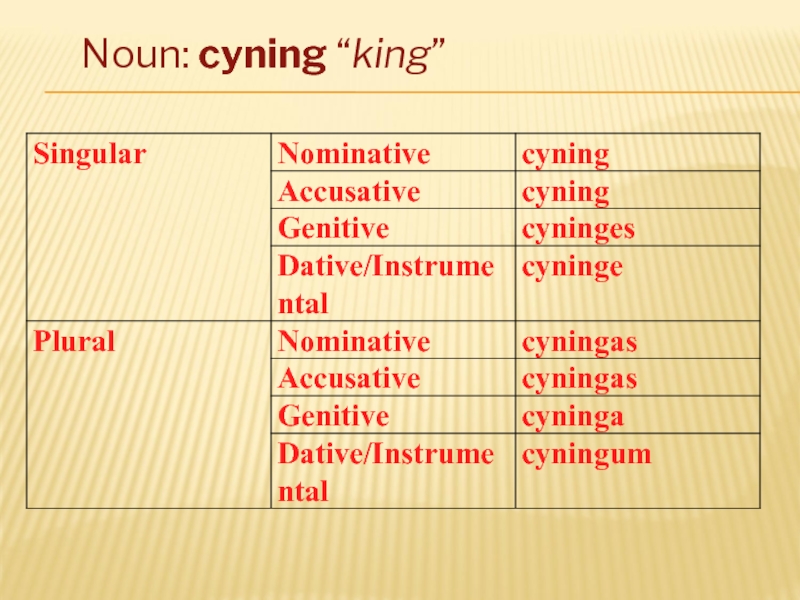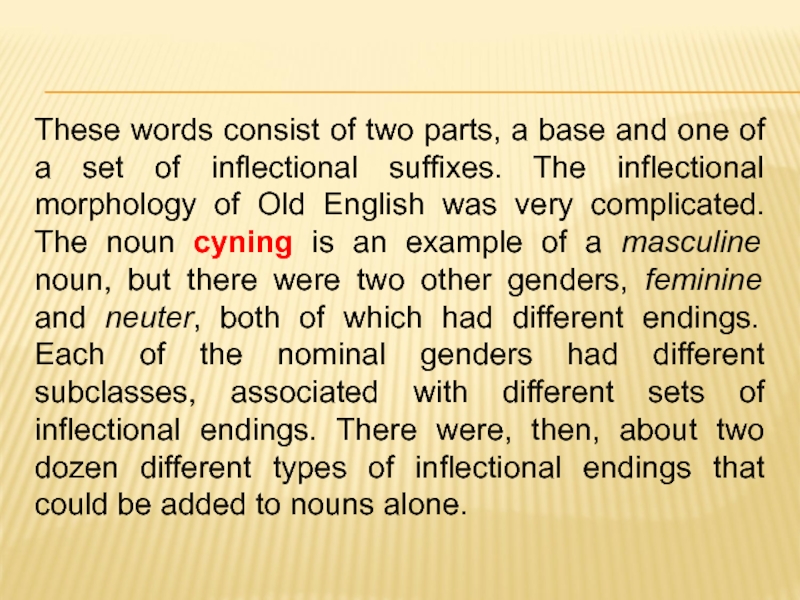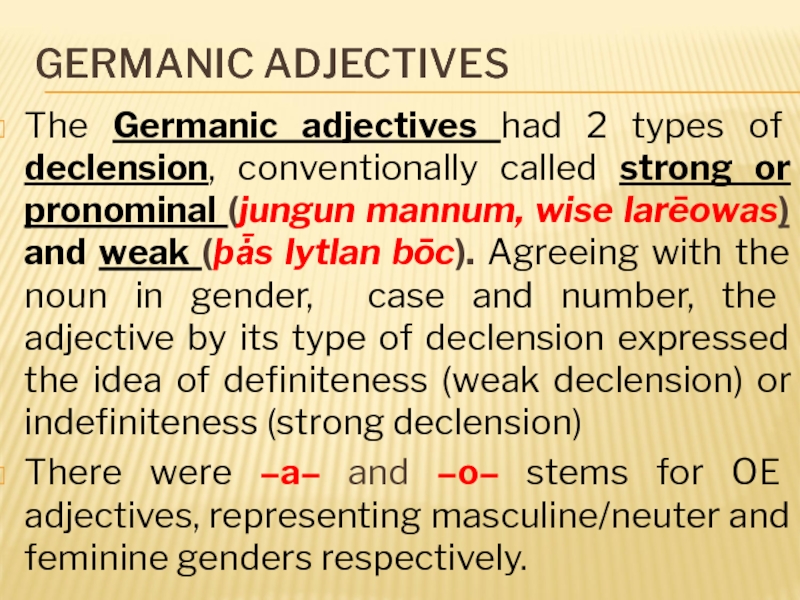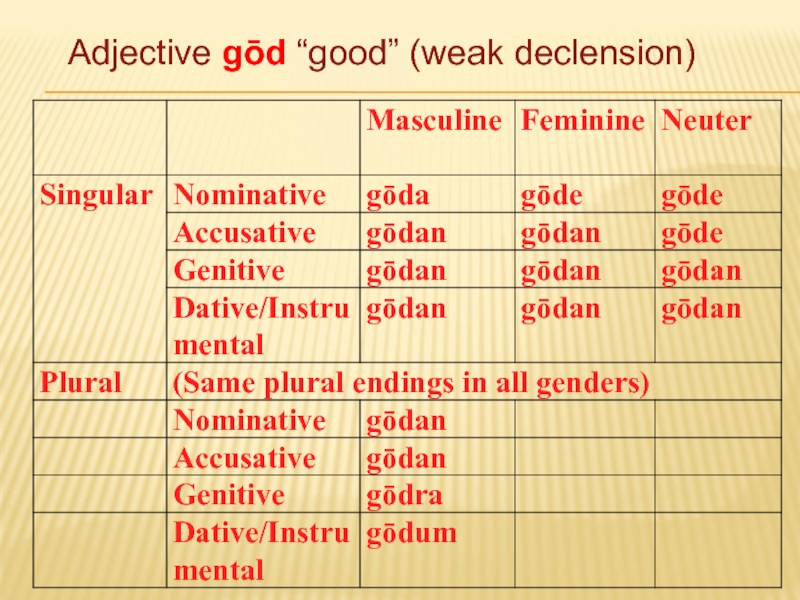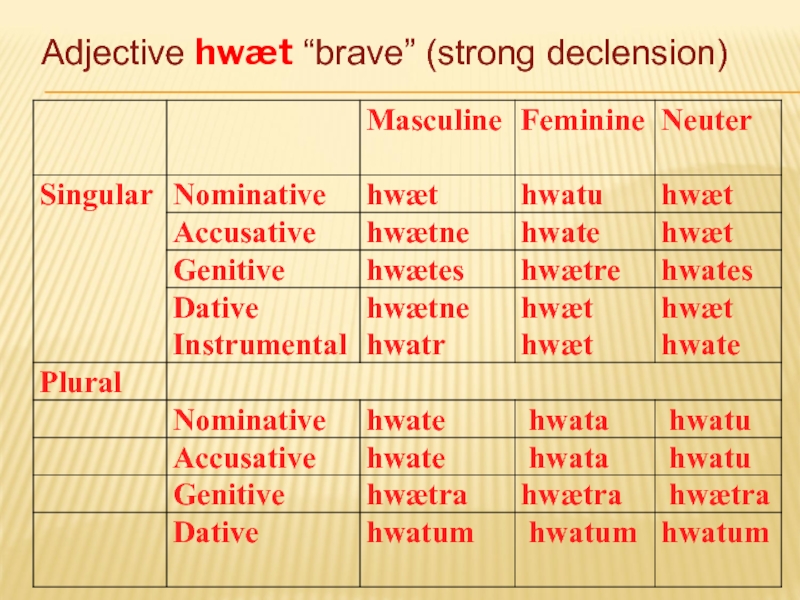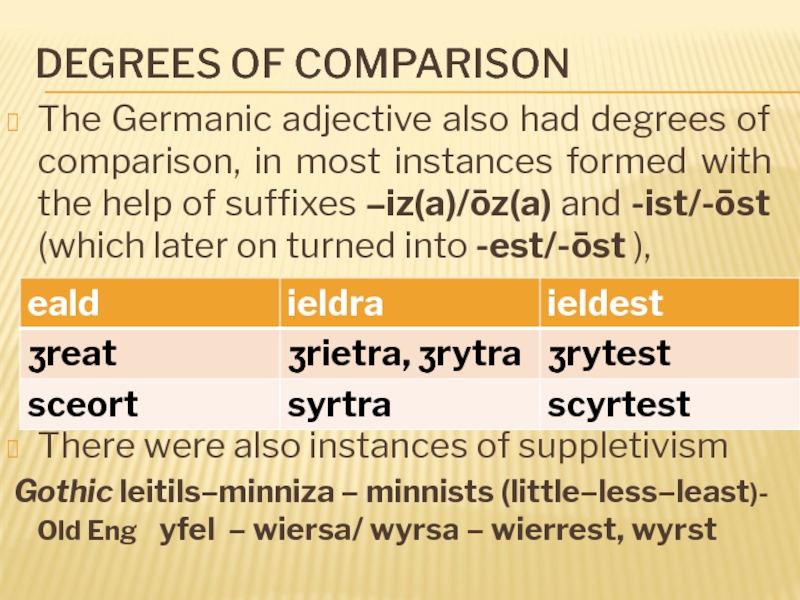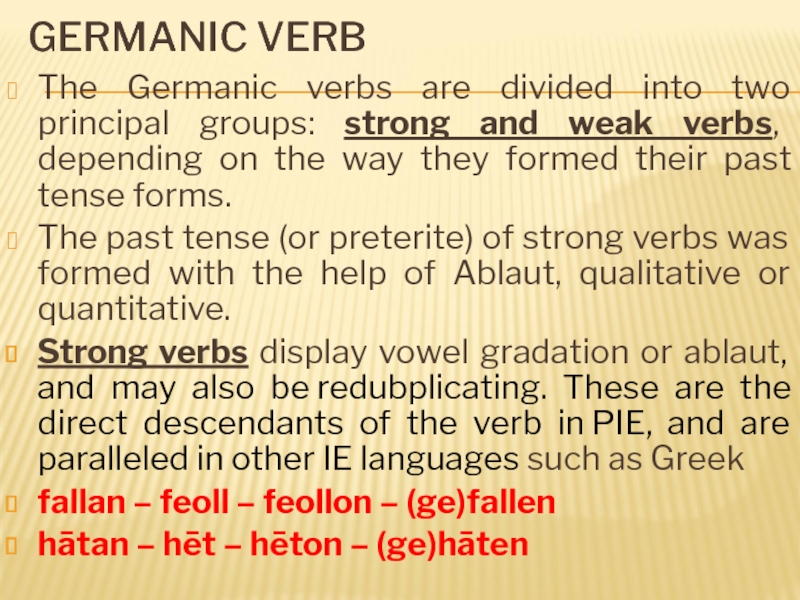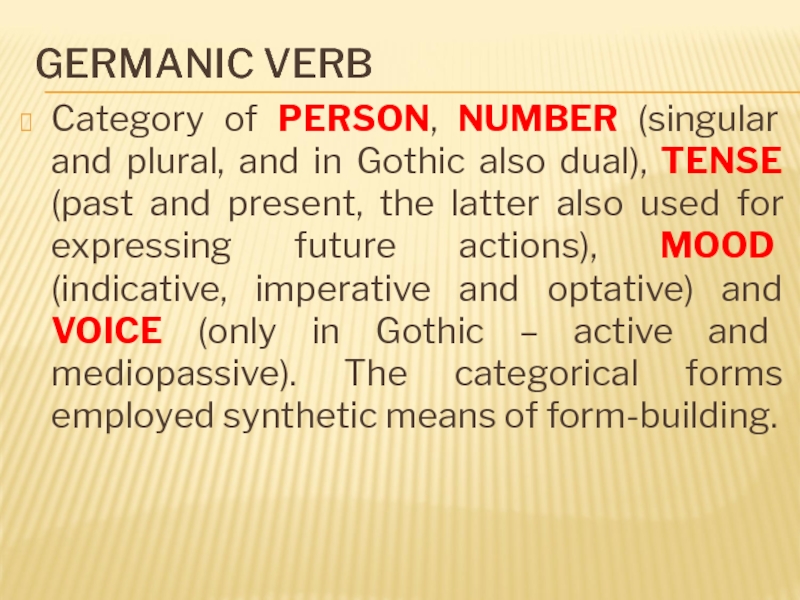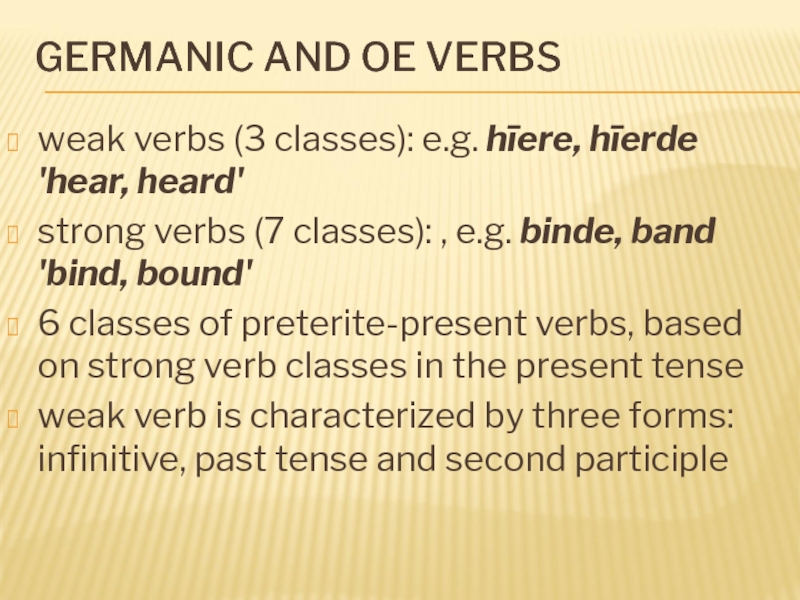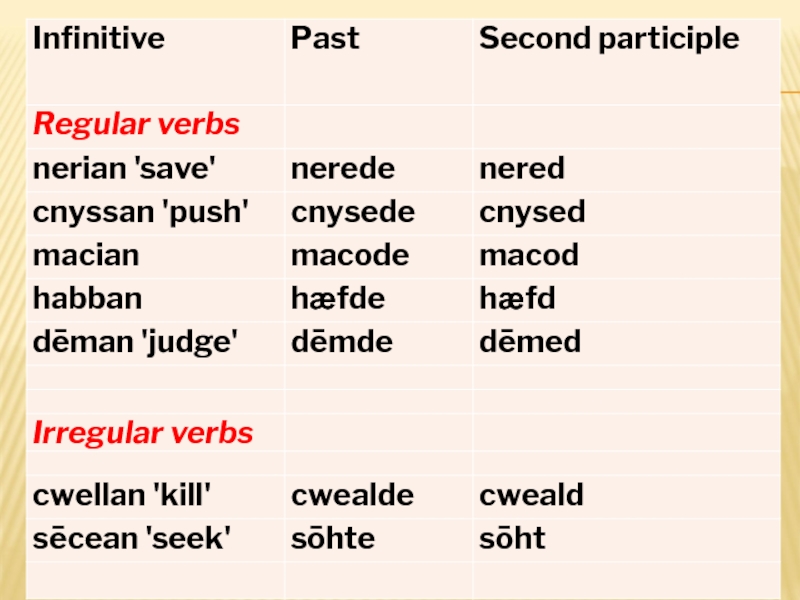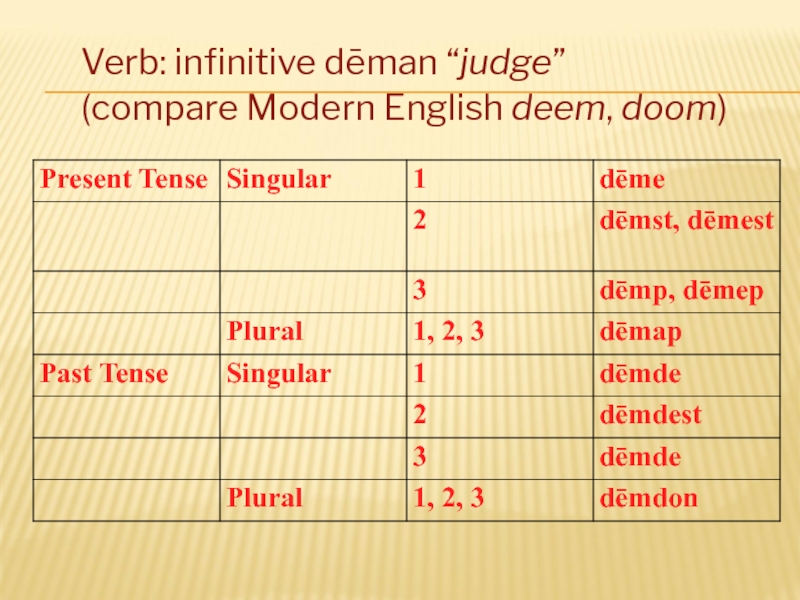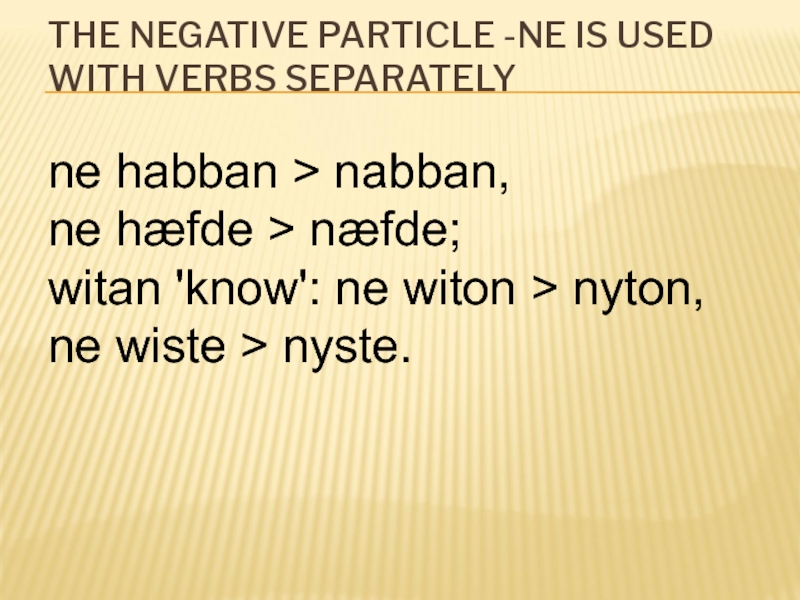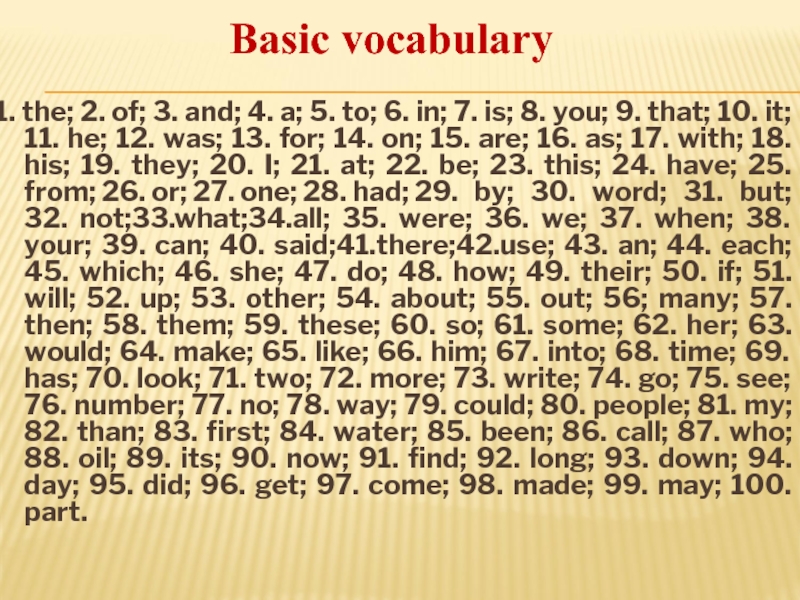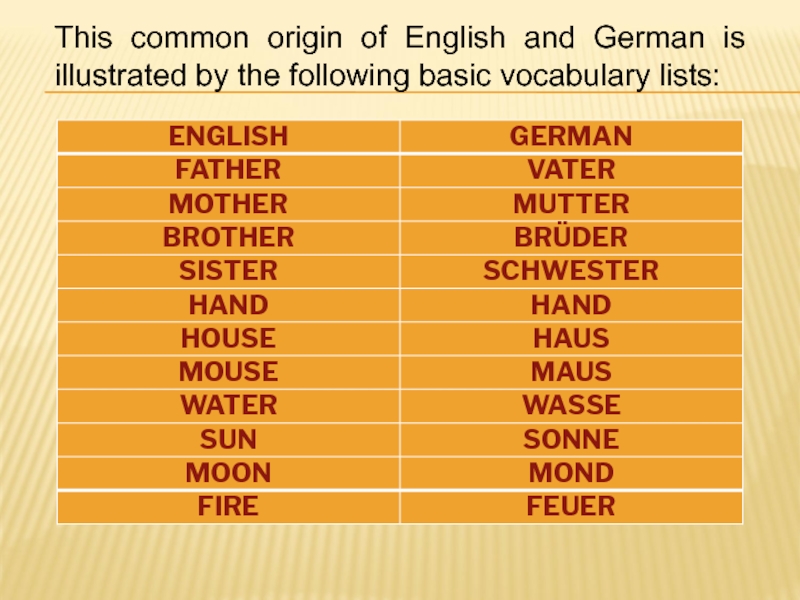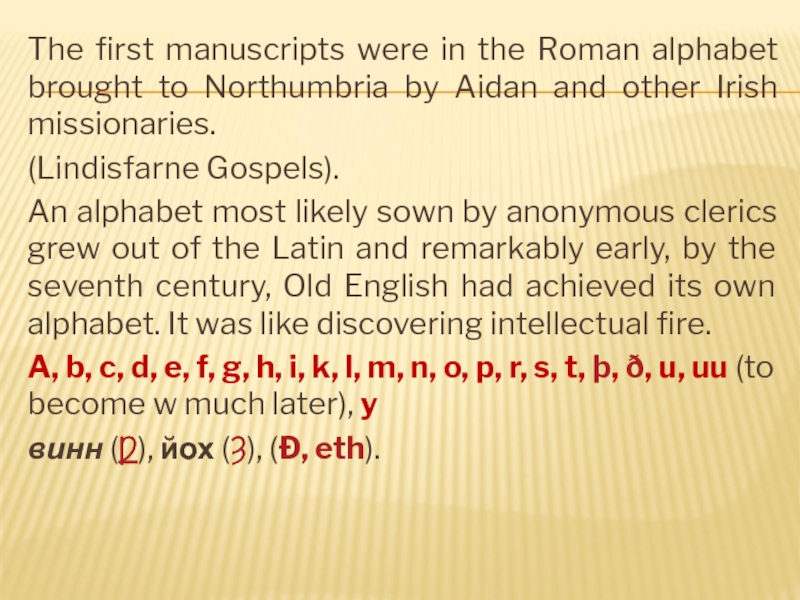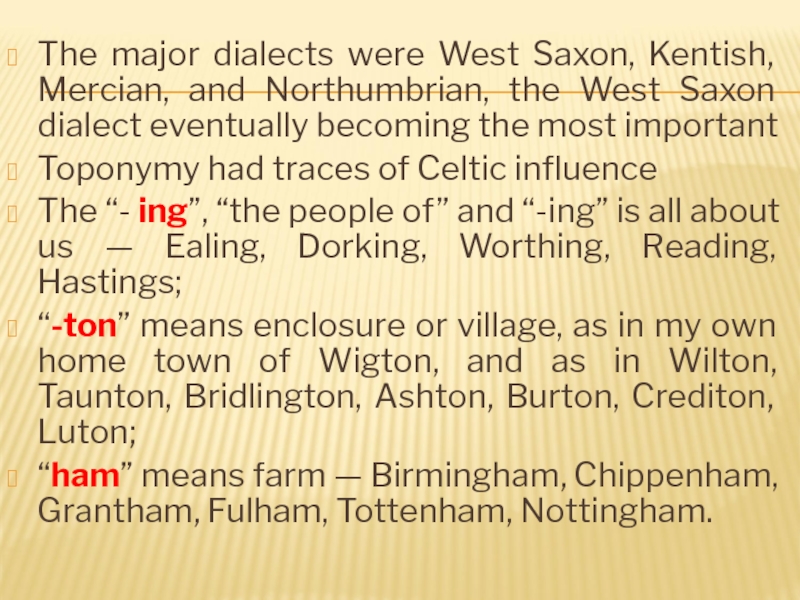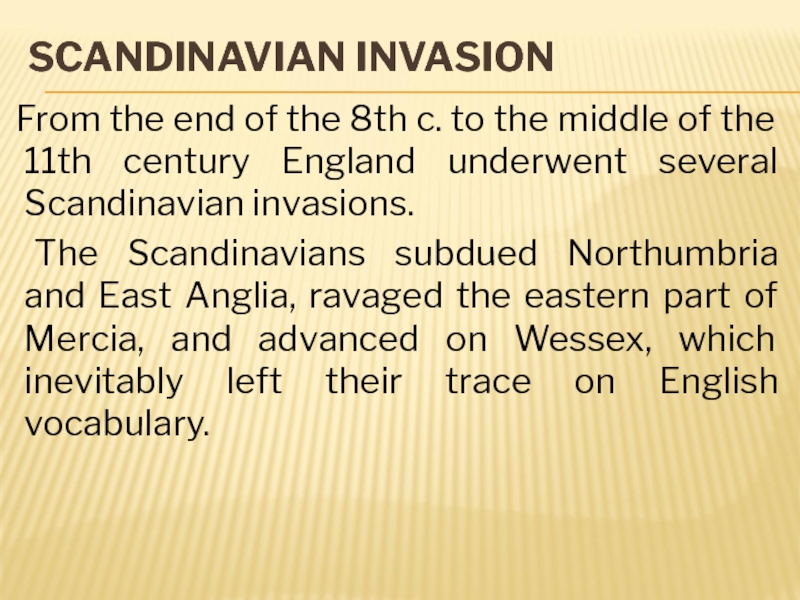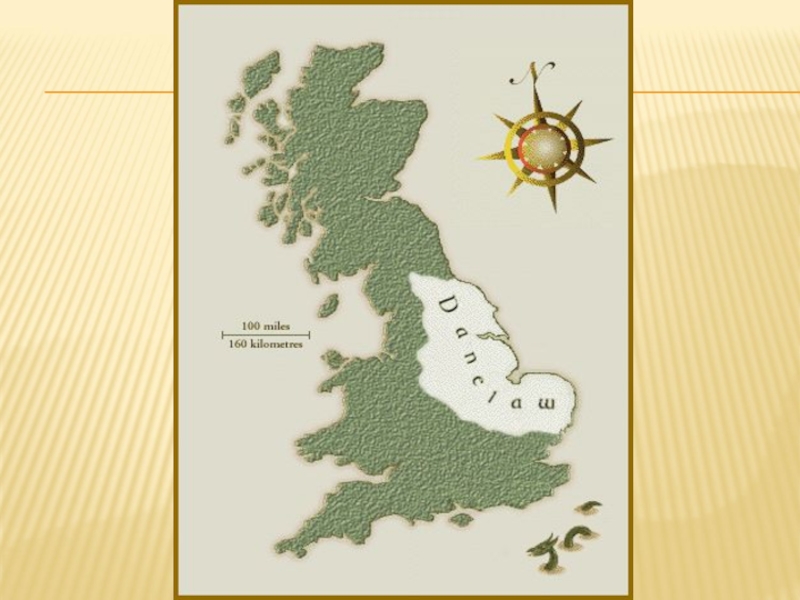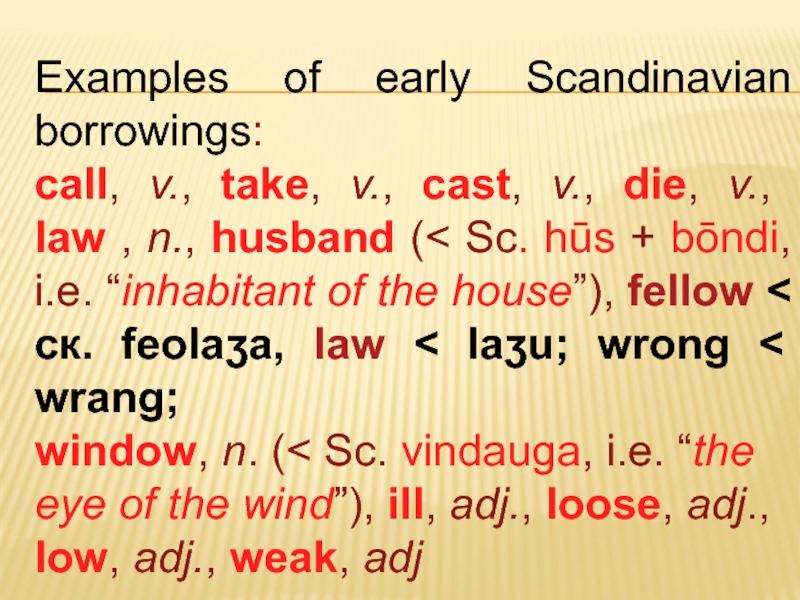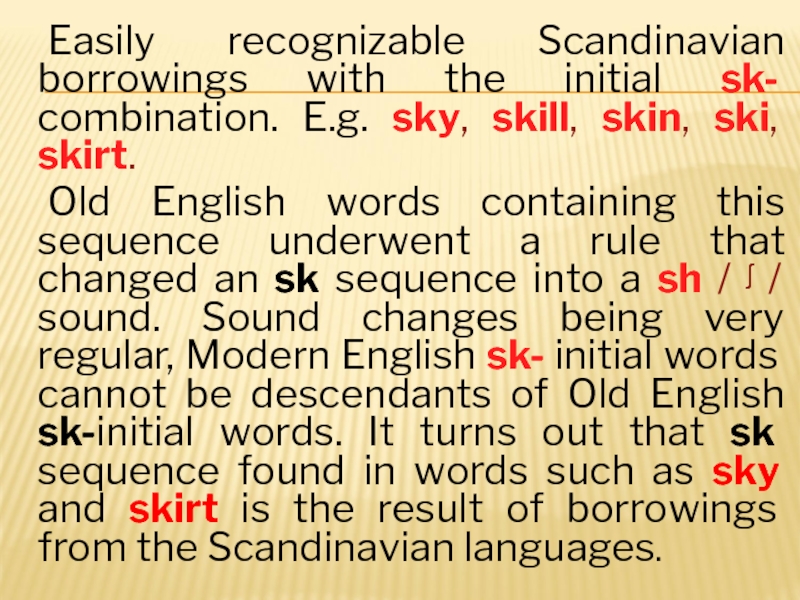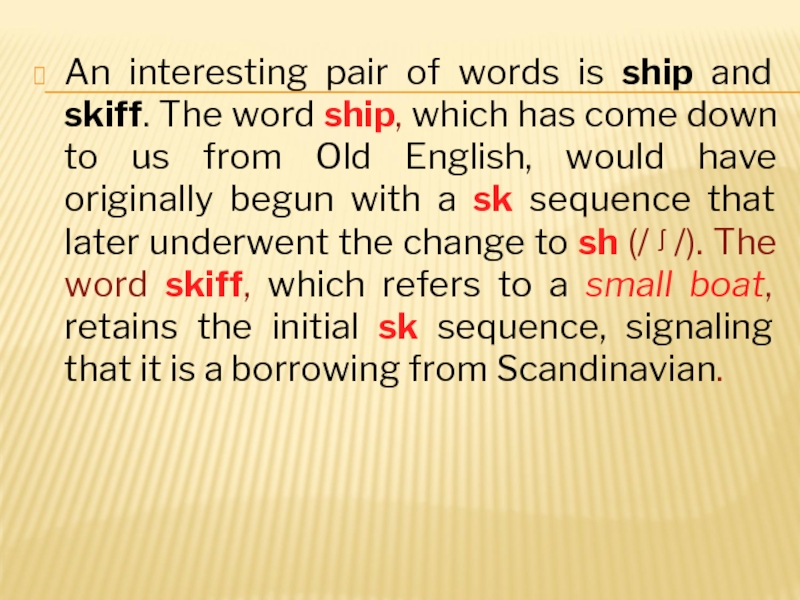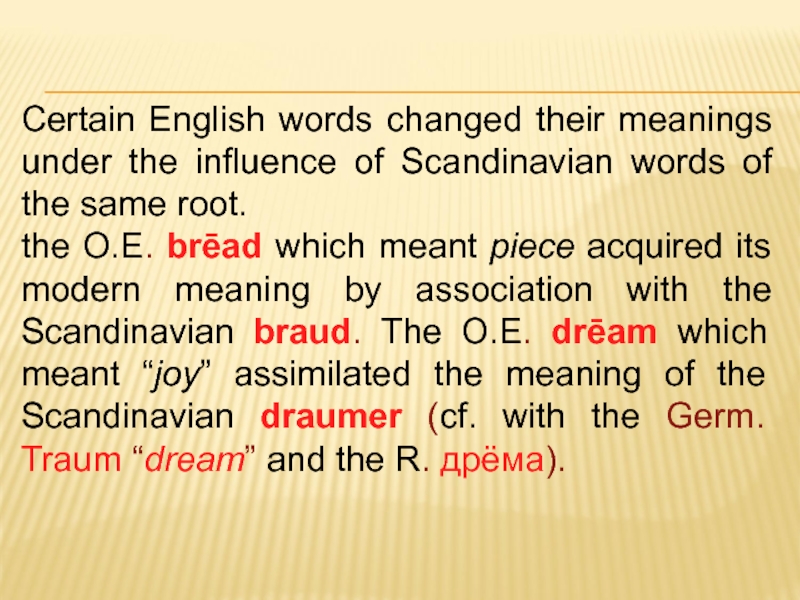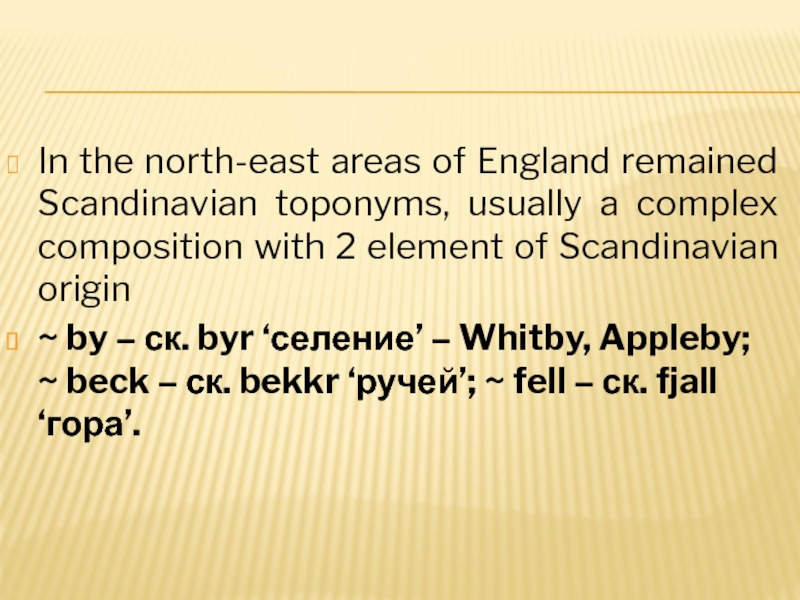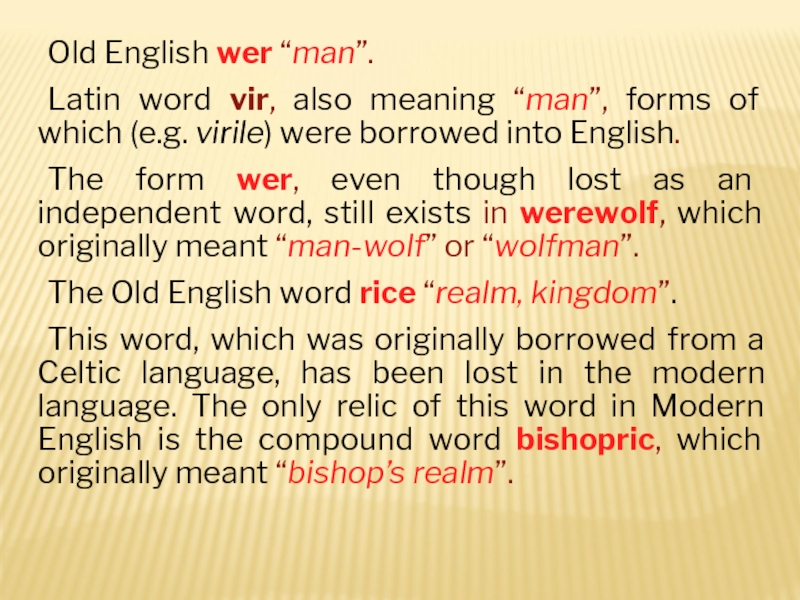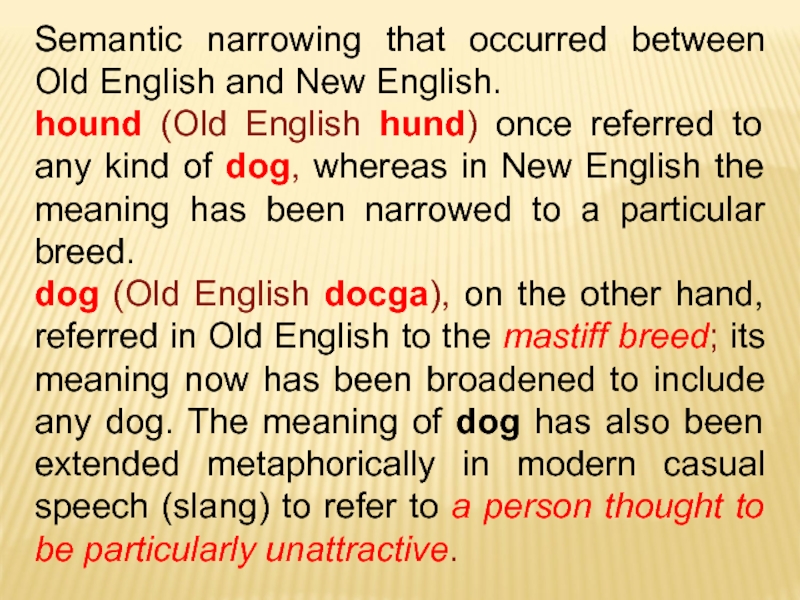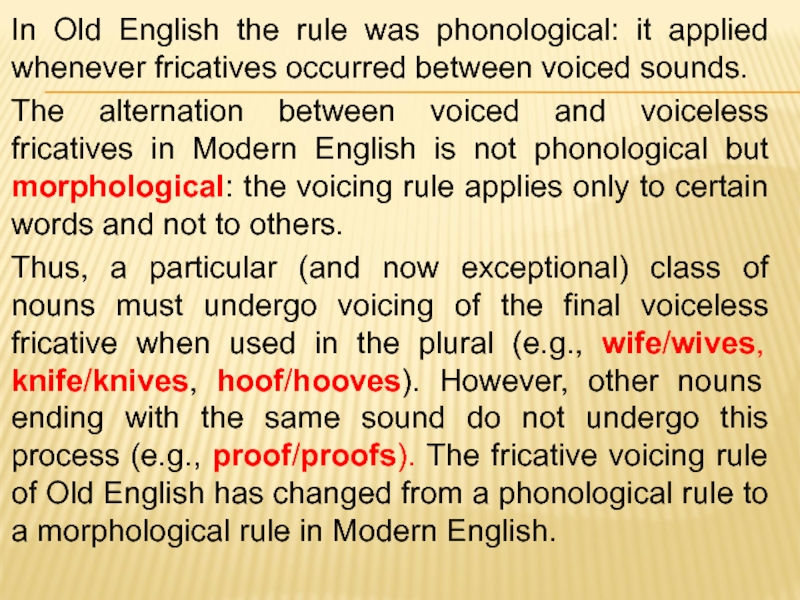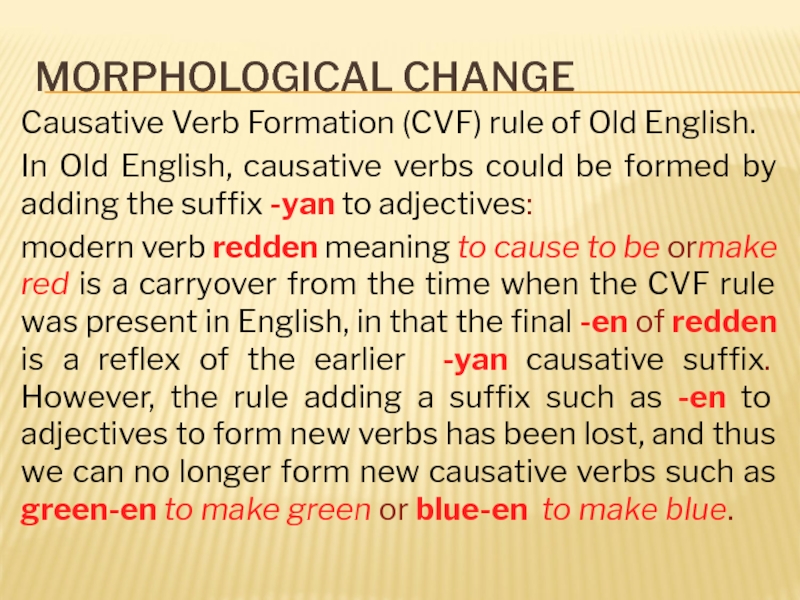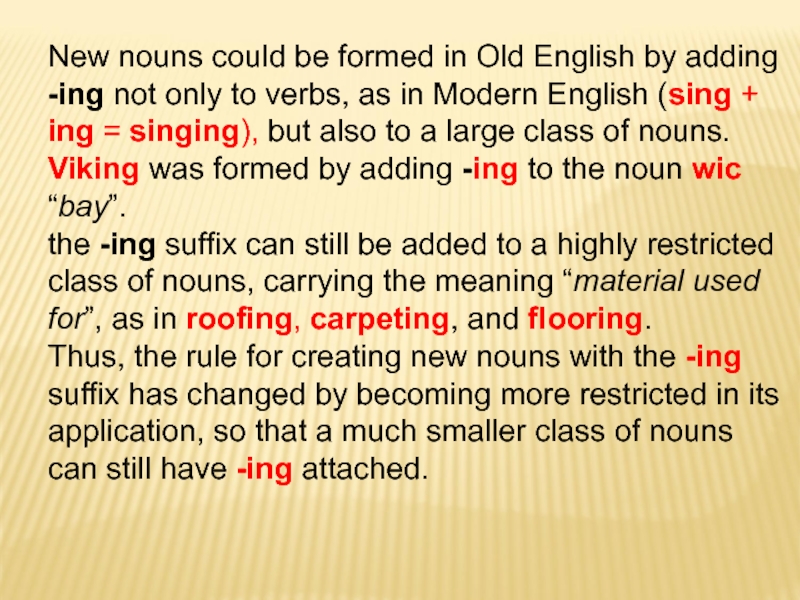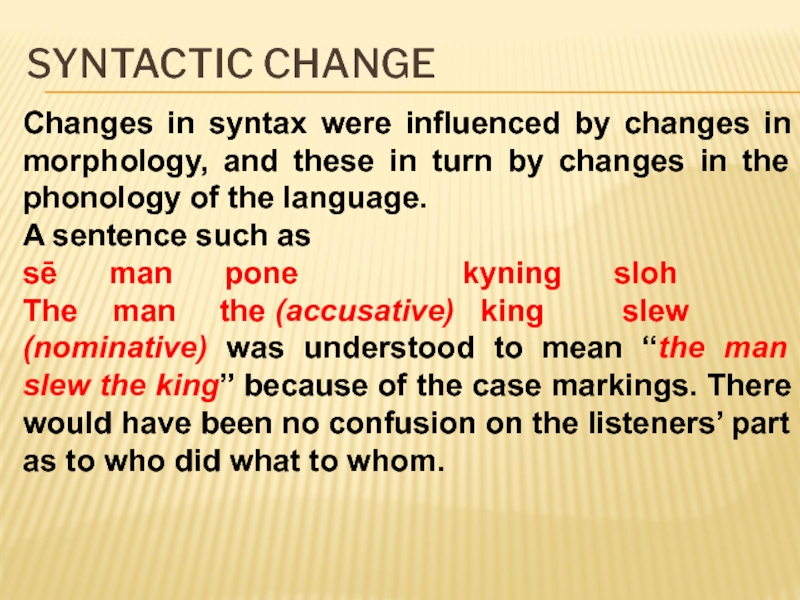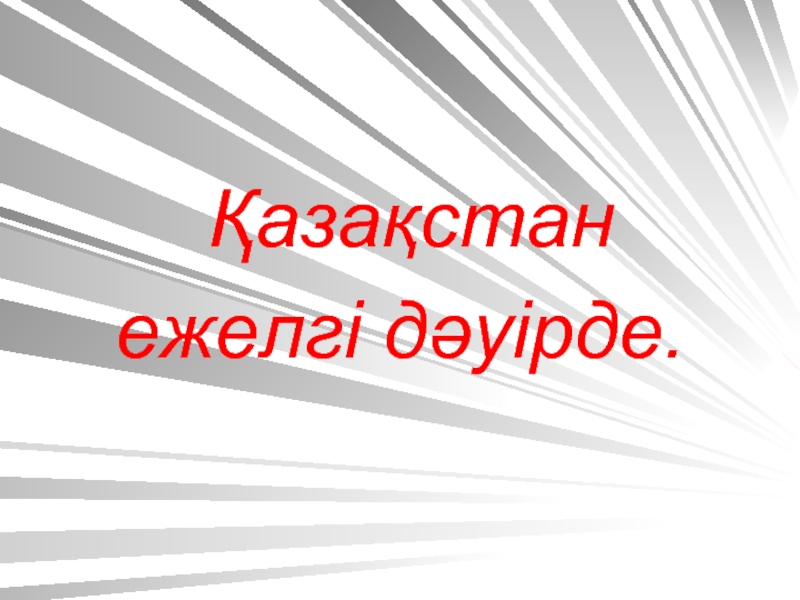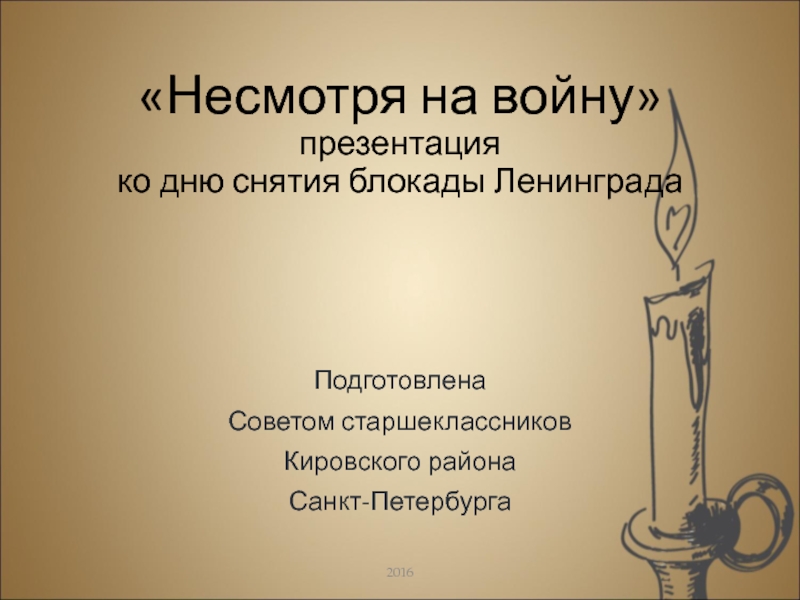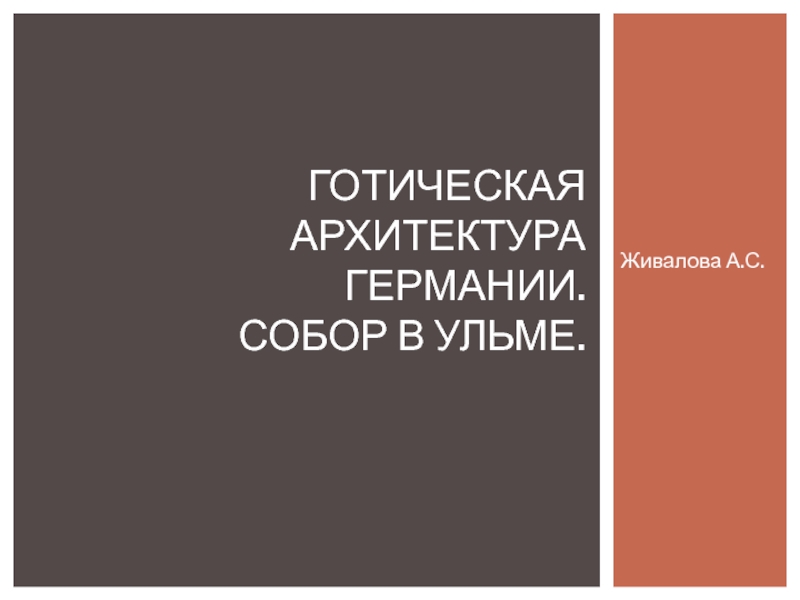3
- Главная
- Разное
- Дизайн
- Бизнес и предпринимательство
- Аналитика
- Образование
- Развлечения
- Красота и здоровье
- Финансы
- Государство
- Путешествия
- Спорт
- Недвижимость
- Армия
- Графика
- Культурология
- Еда и кулинария
- Лингвистика
- Английский язык
- Астрономия
- Алгебра
- Биология
- География
- Детские презентации
- Информатика
- История
- Литература
- Маркетинг
- Математика
- Медицина
- Менеджмент
- Музыка
- МХК
- Немецкий язык
- ОБЖ
- Обществознание
- Окружающий мир
- Педагогика
- Русский язык
- Технология
- Физика
- Философия
- Химия
- Шаблоны, картинки для презентаций
- Экология
- Экономика
- Юриспруденция
The history of the english language. Lecture 3 презентация
Содержание
- 1. The history of the english language. Lecture 3
- 2. GRAMMAR The common Indo-European notional word consisted
- 3. GERMANIC NOUNS Nouns were divided into several
- 4. Noun: cyning “king”
- 5. Category of gender Masculine: stæn, cyning, sunu,
- 6. These words consist of two parts, a
- 7. GERMANIC ADJECTIVES The Germanic adjectives had
- 8. Adjective gōd “good” (weak declension)
- 9. Adjective hwæt “brave” (strong declension)
- 10. DEGREES OF COMPARISON The Germanic adjective
- 11. GERMANIC VERB The Germanic verbs are divided
- 12. GERMANIC VERB Category of PERSON, NUMBER (singular
- 13. GERMANIC AND OE VERBS weak verbs (3
- 14. Regular verbs Irregular verbs
- 15. Verb: infinitive dēman “judge” (compare Modern English deem, doom)
- 16. THE NEGATIVE PARTICLE -NE IS USED WITH
- 17. 1. the; 2. of; 3. and; 4.
- 18. This common origin of English and German is illustrated by the following basic vocabulary lists:
- 19. The first manuscripts were in the Roman
- 20. The major dialects were West Saxon, Kentish,
- 21. From the end of the
- 23. Examples of early Scandinavian borrowings:
- 24. Easily recognizable Scandinavian borrowings with the initial
- 25. An interesting pair of words is ship
- 26. Certain English words changed their meanings under
- 27. In the north-east areas of England
- 28. Doublets
- 29. Old English wer “man”. Latin word
- 30. Semantic narrowing that occurred between Old English
- 31. In Old English the rule was phonological:
- 32. MORPHOLOGICAL CHANGE Causative Verb Formation (CVF) rule
- 33. New nouns could be formed in Old
- 34. SYNTACTIC CHANGE Changes in syntax were influenced
Слайд 2GRAMMAR
The common Indo-European notional word consisted of 3 elements: the root,
expressing the lexical meaning, the inflexion or ending, showing the grammatical form, and the so-called stem-firming suffix, a normal indicator of the stem type
Germanic languages belonged to the syntactic type of form-building, which means that they expressed the grammatical meanings by changing the forms of the word itself, NOT resorting to any auxiliary words
Germanic languages belonged to the syntactic type of form-building, which means that they expressed the grammatical meanings by changing the forms of the word itself, NOT resorting to any auxiliary words
Слайд 3GERMANIC NOUNS
Nouns were divided into several declension classes based on the
vowels or consonants before the case endings. Globally, there were vowel stems (a-, ō-, i- and u-stems) and consonant stems (n-, r- and es-stems and stems ending in other consonants).
Four cases (nominative, genitive, dative, accusative) and two number forms (singular/plural).
Four cases (nominative, genitive, dative, accusative) and two number forms (singular/plural).
Слайд 5Category of gender
Masculine: stæn, cyning, sunu, dæl, guma
Feminine: fōr, hond, bēn,
tunƷe, talu
Neuter: scip, calic, brēǡd, stæþ
The means of form-building were the endings added to the root / stem of the noun.
Three-element morphological structure of OE noun gradually changed into binary: root + case ending
Small group of root stems, characterized by root vowel umlaut (mann, fōt, toþ, Ʒos, hnutu, mus)
Neuter: scip, calic, brēǡd, stæþ
The means of form-building were the endings added to the root / stem of the noun.
Three-element morphological structure of OE noun gradually changed into binary: root + case ending
Small group of root stems, characterized by root vowel umlaut (mann, fōt, toþ, Ʒos, hnutu, mus)
Слайд 6These words consist of two parts, a base and one of
a set of inflectional suffixes. The inflectional morphology of Old English was very complicated. The noun cyning is an example of a masculine noun, but there were two other genders, feminine and neuter, both of which had different endings. Each of the nominal genders had different subclasses, associated with different sets of inflectional endings. There were, then, about two dozen different types of inflectional endings that could be added to nouns alone.
Слайд 7GERMANIC ADJECTIVES
The Germanic adjectives had 2 types of declension, conventionally
called strong or pronominal (jungun mannum, wise larēowas) and weak (þǡs lytlan bōc). Agreeing with the noun in gender, case and number, the adjective by its type of declension expressed the idea of definiteness (weak declension) or indefiniteness (strong declension)
There were –a– and –o– stems for OE adjectives, representing masculine/neuter and feminine genders respectively.
There were –a– and –o– stems for OE adjectives, representing masculine/neuter and feminine genders respectively.
Слайд 10DEGREES OF COMPARISON
The Germanic adjective also had degrees of comparison,
in most instances formed with the help of suffixes –iz(a)/ōz(a) and -ist/-ōst (which later on turned into -est/-ōst ),
There were also instances of suppletivism
Gothic leitils–minniza – minnists (little–less–least)- Old Eng yfel – wiersa/ wyrsa – wierrest, wyrst
There were also instances of suppletivism
Gothic leitils–minniza – minnists (little–less–least)- Old Eng yfel – wiersa/ wyrsa – wierrest, wyrst
Слайд 11GERMANIC VERB
The Germanic verbs are divided into two principal groups: strong
and weak verbs, depending on the way they formed their past tense forms.
The past tense (or preterite) of strong verbs was formed with the help of Ablaut, qualitative or quantitative.
Strong verbs display vowel gradation or ablaut, and may also be redubplicating. These are the direct descendants of the verb in PIE, and are paralleled in other IE languages such as Greek
fallan – feoll – feollon – (ge)fallen
hātan – hēt – hēton – (ge)hāten
The past tense (or preterite) of strong verbs was formed with the help of Ablaut, qualitative or quantitative.
Strong verbs display vowel gradation or ablaut, and may also be redubplicating. These are the direct descendants of the verb in PIE, and are paralleled in other IE languages such as Greek
fallan – feoll – feollon – (ge)fallen
hātan – hēt – hēton – (ge)hāten
Слайд 12GERMANIC VERB
Category of PERSON, NUMBER (singular and plural, and in Gothic
also dual), TENSE (past and present, the latter also used for expressing future actions), MOOD (indicative, imperative and optative) and VOICE (only in Gothic – active and mediopassive). The categorical forms employed synthetic means of form-building.
Слайд 13GERMANIC AND OE VERBS
weak verbs (3 classes): e.g. hīere, hīerde 'hear,
heard'
strong verbs (7 classes): , e.g. binde, band 'bind, bound'
6 classes of preterite-present verbs, based on strong verb classes in the present tense
weak verb is characterized by three forms: infinitive, past tense and second participle
strong verbs (7 classes): , e.g. binde, band 'bind, bound'
6 classes of preterite-present verbs, based on strong verb classes in the present tense
weak verb is characterized by three forms: infinitive, past tense and second participle
Слайд 16THE NEGATIVE PARTICLE -NE IS USED WITH VERBS SEPARATELY
ne habban >
nabban,
ne hӕfde > nӕfde;
witan 'know': ne witon > nyton,
ne wiste > nyste.
ne hӕfde > nӕfde;
witan 'know': ne witon > nyton,
ne wiste > nyste.
Слайд 171. the; 2. of; 3. and; 4. a; 5. to; 6.
in; 7. is; 8. you; 9. that; 10. it; 11. he; 12. was; 13. for; 14. on; 15. are; 16. as; 17. with; 18. his; 19. they; 20. I; 21. at; 22. be; 23. this; 24. have; 25. from; 26. or; 27. one; 28. had; 29. by; 30. word; 31. but; 32. not;33.what;34.all; 35. were; 36. we; 37. when; 38. your; 39. can; 40. said;41.there;42.use; 43. an; 44. each; 45. which; 46. she; 47. do; 48. how; 49. their; 50. if; 51. will; 52. up; 53. other; 54. about; 55. out; 56; many; 57. then; 58. them; 59. these; 60. so; 61. some; 62. her; 63. would; 64. make; 65. like; 66. him; 67. into; 68. time; 69. has; 70. look; 71. two; 72. more; 73. write; 74. go; 75. see; 76. number; 77. no; 78. way; 79. could; 80. people; 81. my; 82. than; 83. first; 84. water; 85. been; 86. call; 87. who; 88. oil; 89. its; 90. now; 91. find; 92. long; 93. down; 94. day; 95. did; 96. get; 97. come; 98. made; 99. may; 100. part.
Basic vocabulary
Слайд 18This common origin of English and German is illustrated by the
following basic vocabulary lists:
Слайд 19The first manuscripts were in the Roman alphabet brought to Northumbria
by Aidan and other Irish missionaries.
(Lindisfarne Gospels).
An alphabet most likely sown by anonymous clerics grew out of the Latin and remarkably early, by the seventh century, Old English had achieved its own alphabet. It was like discovering intellectual fire.
A, b, c, d, e, f, g, h, i, k, l, m, n, o, p, r, s, t, þ, ð, u, uu (to become w much later), y
винн (Ƿ), йох (Ȝ), (Ð, eth).
(Lindisfarne Gospels).
An alphabet most likely sown by anonymous clerics grew out of the Latin and remarkably early, by the seventh century, Old English had achieved its own alphabet. It was like discovering intellectual fire.
A, b, c, d, e, f, g, h, i, k, l, m, n, o, p, r, s, t, þ, ð, u, uu (to become w much later), y
винн (Ƿ), йох (Ȝ), (Ð, eth).
Слайд 20The major dialects were West Saxon, Kentish, Mercian, and Northumbrian, the
West Saxon dialect eventually becoming the most important
Toponymy had traces of Celtic influence
The “- ing”, “the people of” and “-ing” is all about us — Ealing, Dorking, Worthing, Reading, Hastings;
“-ton” means enclosure or village, as in my own home town of Wigton, and as in Wilton, Taunton, Bridlington, Ashton, Burton, Crediton, Luton;
“ham” means farm — Birmingham, Chippenham, Grantham, Fulham, Tottenham, Nottingham.
Toponymy had traces of Celtic influence
The “- ing”, “the people of” and “-ing” is all about us — Ealing, Dorking, Worthing, Reading, Hastings;
“-ton” means enclosure or village, as in my own home town of Wigton, and as in Wilton, Taunton, Bridlington, Ashton, Burton, Crediton, Luton;
“ham” means farm — Birmingham, Chippenham, Grantham, Fulham, Tottenham, Nottingham.
Слайд 21 From the end of the 8th c. to the
middle of the 11th century England underwent several Scandinavian invasions.
The Scandinavians subdued Northumbria and East Anglia, ravaged the eastern part of Mercia, and advanced on Wessex, which inevitably left their trace on English vocabulary.
The Scandinavians subdued Northumbria and East Anglia, ravaged the eastern part of Mercia, and advanced on Wessex, which inevitably left their trace on English vocabulary.
SCANDINAVIAN INVASION
Слайд 23
Examples of early Scandinavian borrowings:
call, v., take, v., cast, v.,
die, v., law , n., husband (< Sc. hūs + bōndi, i.e. “inhabitant of the house”), fellow < ск. feolaʒa, law < laʒu; wrong < wrang;
window, n. (< Sc. vindauga, i.e. “the eye of the wind”), ill, adj., loose, adj., low, adj., weak, adj
window, n. (< Sc. vindauga, i.e. “the eye of the wind”), ill, adj., loose, adj., low, adj., weak, adj
Слайд 24 Easily recognizable Scandinavian borrowings with the initial sk- combination. E.g. sky,
skill, skin, ski, skirt.
Old English words containing this sequence underwent a rule that changed an sk sequence into a sh / ᶴ / sound. Sound changes being very regular, Modern English sk- initial words cannot be descendants of Old English sk-initial words. It turns out that sk sequence found in words such as sky and skirt is the result of borrowings from the Scandinavian languages.
Old English words containing this sequence underwent a rule that changed an sk sequence into a sh / ᶴ / sound. Sound changes being very regular, Modern English sk- initial words cannot be descendants of Old English sk-initial words. It turns out that sk sequence found in words such as sky and skirt is the result of borrowings from the Scandinavian languages.
Слайд 25An interesting pair of words is ship and skiff. The word
ship, which has come down to us from Old English, would have originally begun with a sk sequence that later underwent the change to sh (/ ᶴ /). The word skiff, which refers to a small boat, retains the initial sk sequence, signaling that it is a borrowing from Scandinavian.
Слайд 26Certain English words changed their meanings under the influence of Scandinavian
words of the same root.
the O.E. brēad which meant piece acquired its modern meaning by association with the Scandinavian braud. The O.E. drēam which meant “joy” assimilated the meaning of the Scandinavian draumer (cf. with the Germ. Traum “dream” and the R. дрёма).
the O.E. brēad which meant piece acquired its modern meaning by association with the Scandinavian braud. The O.E. drēam which meant “joy” assimilated the meaning of the Scandinavian draumer (cf. with the Germ. Traum “dream” and the R. дрёма).
Слайд 27
In the north-east areas of England remained Scandinavian toponyms, usually a
complex composition with 2 element of Scandinavian origin
~ by – ск. byr ‘селение’ – Whitby, Appleby; ~ beck – ск. bekkr ‘ручей’; ~ fell – ск. fjall ‘гора’.
~ by – ск. byr ‘селение’ – Whitby, Appleby; ~ beck – ск. bekkr ‘ручей’; ~ fell – ск. fjall ‘гора’.
Слайд 28
Doublets or etymological twins:
English Scandinavian
shirt skirt
shriek screech
from fro
whole hale
Слайд 29 Old English wer “man”.
Latin word vir, also meaning “man”, forms
of which (e.g. virile) were borrowed into English.
The form wer, even though lost as an independent word, still exists in werewolf, which originally meant “man-wolf” or “wolfman”.
The Old English word rice “realm, kingdom”.
This word, which was originally borrowed from a Celtic language, has been lost in the modern language. The only relic of this word in Modern English is the compound word bishopric, which originally meant “bishop’s realm”.
The form wer, even though lost as an independent word, still exists in werewolf, which originally meant “man-wolf” or “wolfman”.
The Old English word rice “realm, kingdom”.
This word, which was originally borrowed from a Celtic language, has been lost in the modern language. The only relic of this word in Modern English is the compound word bishopric, which originally meant “bishop’s realm”.
Слайд 30Semantic narrowing that occurred between Old English and New English.
hound
(Old English hund) once referred to any kind of dog, whereas in New English the meaning has been narrowed to a particular breed.
dog (Old English docga), on the other hand, referred in Old English to the mastiff breed; its meaning now has been broadened to include any dog. The meaning of dog has also been extended metaphorically in modern casual speech (slang) to refer to a person thought to be particularly unattractive.
dog (Old English docga), on the other hand, referred in Old English to the mastiff breed; its meaning now has been broadened to include any dog. The meaning of dog has also been extended metaphorically in modern casual speech (slang) to refer to a person thought to be particularly unattractive.
Слайд 31In Old English the rule was phonological: it applied whenever fricatives
occurred between voiced sounds.
The alternation between voiced and voiceless fricatives in Modern English is not phonological but morphological: the voicing rule applies only to certain words and not to others.
Thus, a particular (and now exceptional) class of nouns must undergo voicing of the final voiceless fricative when used in the plural (e.g., wife/wives, knife/knives, hoof/hooves). However, other nouns ending with the same sound do not undergo this process (e.g., proof/proofs). The fricative voicing rule of Old English has changed from a phonological rule to a morphological rule in Modern English.
The alternation between voiced and voiceless fricatives in Modern English is not phonological but morphological: the voicing rule applies only to certain words and not to others.
Thus, a particular (and now exceptional) class of nouns must undergo voicing of the final voiceless fricative when used in the plural (e.g., wife/wives, knife/knives, hoof/hooves). However, other nouns ending with the same sound do not undergo this process (e.g., proof/proofs). The fricative voicing rule of Old English has changed from a phonological rule to a morphological rule in Modern English.
Слайд 32MORPHOLOGICAL CHANGE
Causative Verb Formation (CVF) rule of Old English.
In Old
English, causative verbs could be formed by adding the suffix -yan to adjectives:
modern verb redden meaning to cause to be ormake red is a carryover from the time when the CVF rule was present in English, in that the final -en of redden is a reflex of the earlier -yan causative suffix. However, the rule adding a suffix such as -en to adjectives to form new verbs has been lost, and thus we can no longer form new causative verbs such as green-en to make green or blue-en to make blue.
modern verb redden meaning to cause to be ormake red is a carryover from the time when the CVF rule was present in English, in that the final -en of redden is a reflex of the earlier -yan causative suffix. However, the rule adding a suffix such as -en to adjectives to form new verbs has been lost, and thus we can no longer form new causative verbs such as green-en to make green or blue-en to make blue.
Слайд 33New nouns could be formed in Old English by adding -ing
not only to verbs, as in Modern English (sing + ing = singing), but also to a large class of nouns.
Viking was formed by adding -ing to the noun wic “bay”.
the -ing suffix can still be added to a highly restricted class of nouns, carrying the meaning “material used for”, as in roofing, carpeting, and flooring.
Thus, the rule for creating new nouns with the -ing suffix has changed by becoming more restricted in its application, so that a much smaller class of nouns can still have -ing attached.
Viking was formed by adding -ing to the noun wic “bay”.
the -ing suffix can still be added to a highly restricted class of nouns, carrying the meaning “material used for”, as in roofing, carpeting, and flooring.
Thus, the rule for creating new nouns with the -ing suffix has changed by becoming more restricted in its application, so that a much smaller class of nouns can still have -ing attached.
Слайд 34SYNTACTIC CHANGE
Changes in syntax were influenced by changes in morphology, and
these in turn by changes in the phonology of the language.
A sentence such as
sē man pone kyning sloh
The man the (accusative) king slew
(nominative) was understood to mean “the man slew the king” because of the case markings. There would have been no confusion on the listeners’ part as to who did what to whom.
A sentence such as
sē man pone kyning sloh
The man the (accusative) king slew
(nominative) was understood to mean “the man slew the king” because of the case markings. There would have been no confusion on the listeners’ part as to who did what to whom.
